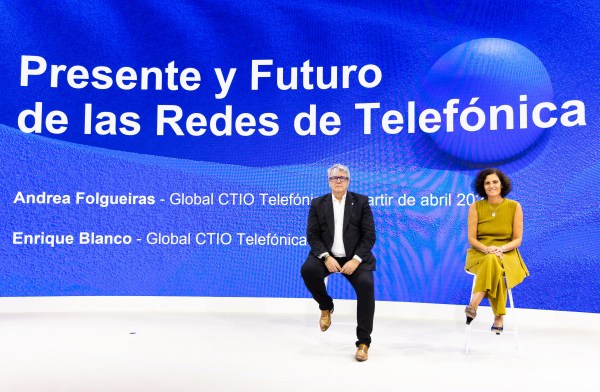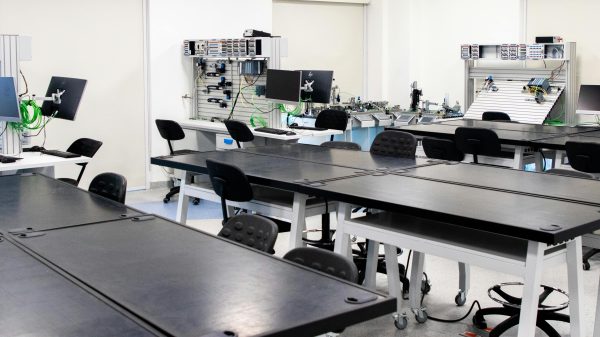As published in Light Reading on Monday, 24th August, 2020
Telcos have proved critical in the pandemic. Mobile phones and data connections have long been key enablers of the modern economy, but the past few months have shown just how vital these connections are.
During the first month of the COVID-19 crisis, data traffic on our fixed network in Spain grew by 35% – equivalent to the expected growth for a whole year.
In the UK, O2 reported a 25% rise in calls during lockdown, while in Germany they rose by 20-30%.
COVID-19 has merely accelerated trends that were long underway.
We have seen demand for some digital products at levels that we had planned for five years from now. In the next few years, customers will have access to super-fast connections via 5G.
These networks of the future will be fundamentally different from the 3G and 4G networks of the past, which relied on specific hardware from a small number of suppliers.
5G can strongly benefit from the introduction of the open network paradigm.
Telefónica believes that mobile networks are evolving towards a “virtualized” model, known as open RAN, built on off-the-shelf hardware and cloud-based software in a multivendor environment with open interfaces between network elements.
The power of open RAN
This new architecture will have a significant impact on the telecom industry.
First, it will allow new entrants to disrupt the market. Telecom operators will be able to pick and choose different software components for these virtualized networks.
Ultimately, this will make networks more flexible and secure, since they won’t have a single supplier.
The more companies embracing the open RAN model, the better. That is why we are fostering the development of new entrants to be able to compete with current suppliers in all our markets.
Second, a virtualized open radio access architecture will support faster software innovation and more flexibility.
This will give rise to advanced features like network automation, self-optimization of radio resources, coordination of radio access nodes, exposure to third-party multi-access edge computing (MEC) applications through open application programming interfaces (APIs), and integration with virtualized core and transport networks.
Third, open RAN will also be useful for coverage in hard to reach rural locations – such as an area with a very small population – or where a sharing model is more cost-effective, such as dense urban locations where large numbers of small cells are required.
Investing for the future of connectivity
Telefónica has been an early adopter and is playing a very active role in open networks.
We joined dedicated industry groups like the Telecom Infra Project (TIP) in 2017, and the O-RAN Alliance in 2018, as well as the Open RAN Policy Coalition in 2020.
We also bought a stake in Altiostar, a company that provides RAN software solutions that support open interfaces.
Between this year and the beginning of next year, we will deploy open RAN pilots in our core markets of Brazil, Germany, Spain and the UK.
Our intention is then to ramp up towards the thousands of nodes in these markets. The ambition is for open RAN to reach up to 50% of the 4G and 5G RAN growth between 2022 and 2025.
Collaboration is key
We are helping to develop the technology further through our strategic collaborations with Altiostar, Gigatera Communications, Intel, Supermicro and Xilinx.
The main goal is help prescribe the necessary hardware and software components, including testing the complete solution in the lab and in the field, integrating an open RAN model into our end-to-end virtualization program (UNICA Next).
The collaboration will help mature the operational model, with new services and automation.
Open interfaces are at the core of the hardware and software development, which will allow for seamless upgrades of specific parts of the network without affecting others.
For open RAN to work, the whole industry needs to work together to help overcome the challenges.
Operators will need to make sure it can be smoothly integrated with legacy infrastructure. We will have to integrate all the pieces, while providing the appropriate support and service levels to the mobile network operator.
It will take time to carry out the interoperability tests that will be needed to prove the maturity of the technology.
There is enough radio semiconductor innovation to produce O-RAN-compliant radios that can meet advanced 5G requirements.
This innovation in radio is relevant for traditional as well as open RAN radios, covering massive MIMO technology and the most stringent radio configurations.
The open RAN industry needs to develop the necessary radio options that fit the current spectrum assets under the configurations demanded by operators.
Finally, operators will need to train employees in new skills (cloud techniques, integration etc.), and new service provider requirements.
As an industry, we can overcome these challenges. The collaboration with other operators to provide a safe environment for suppliers is essential.
So is encouraging the industry to plan for mass-scale deployments.
Providing spaces for innovation, integration, testing and certification of open RAN solutions is critical for the development of interoperable components and commercial products.
Supporting bodies like the O-RAN Alliance and TIP – and incorporating their architectures and specifications in our procurement processes – is key.
Pursuing open networks is the right thing to do for our customers. They are critical to meeting the future needs of a society more reliant than ever on connectivity.
Also read: Enrique Blanco, included in the 5G 100 List worldwide
Enrique Blanco, Global CTIO of Telefónica, has been included in a prominent place in the TOP 100 of the 5G in the world according to an analysis published by Informa Tech, bringing together work from across 5G World, Omdia, the 5G Exchange, Light Reading and Telecoms.com, which recognizes the most influential people in 5G products, technologies and systems. This publication places Enrique Blanco at number #11 on the worldwide list and underlines his role in driving a “multi-vendor” strategy at the core of the 5G network, which is essential to privacy and security, as well as his considerable influence in the market to urge vendors to get behind open source and cloud-native technologies.
Download the 5G 100 here.







